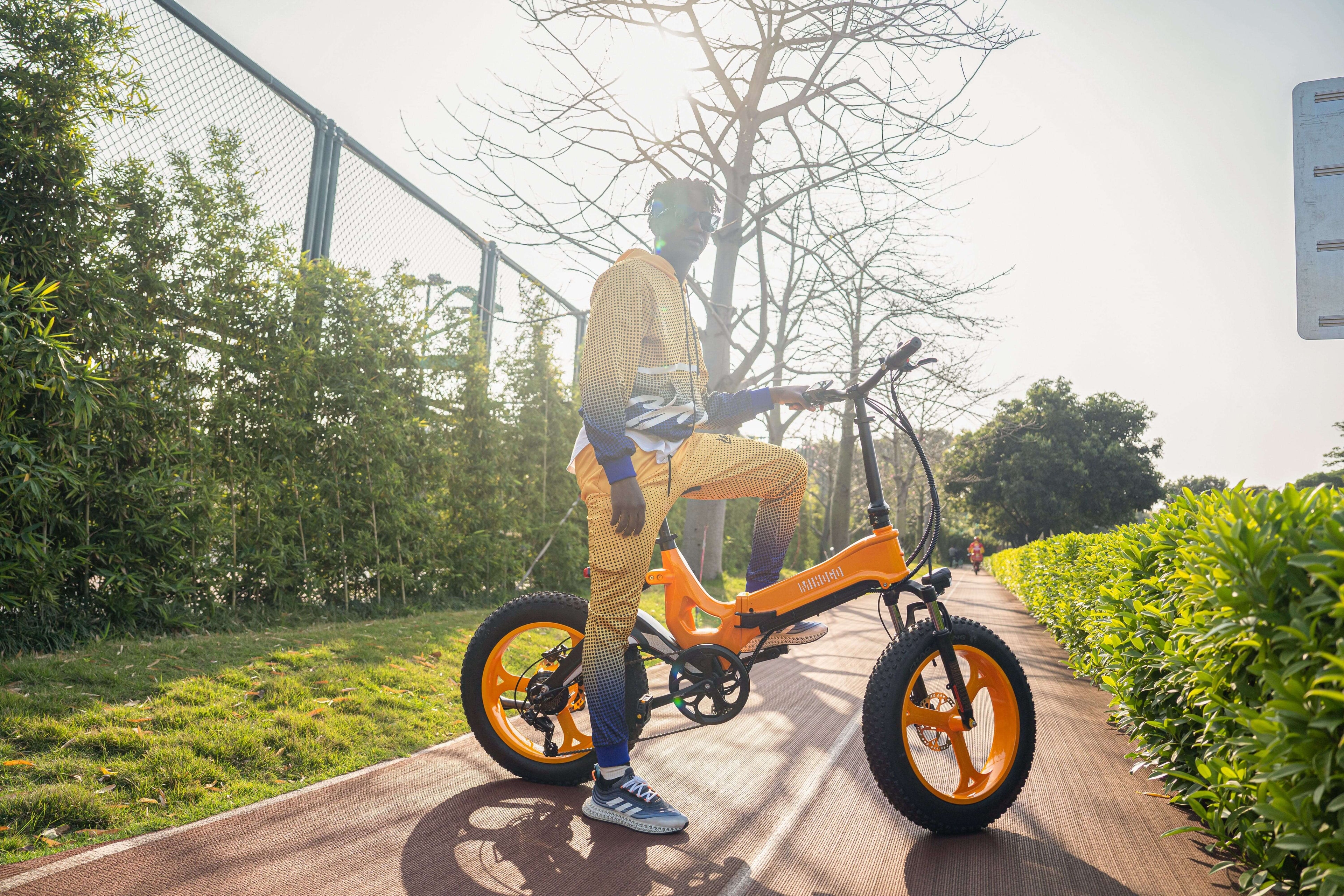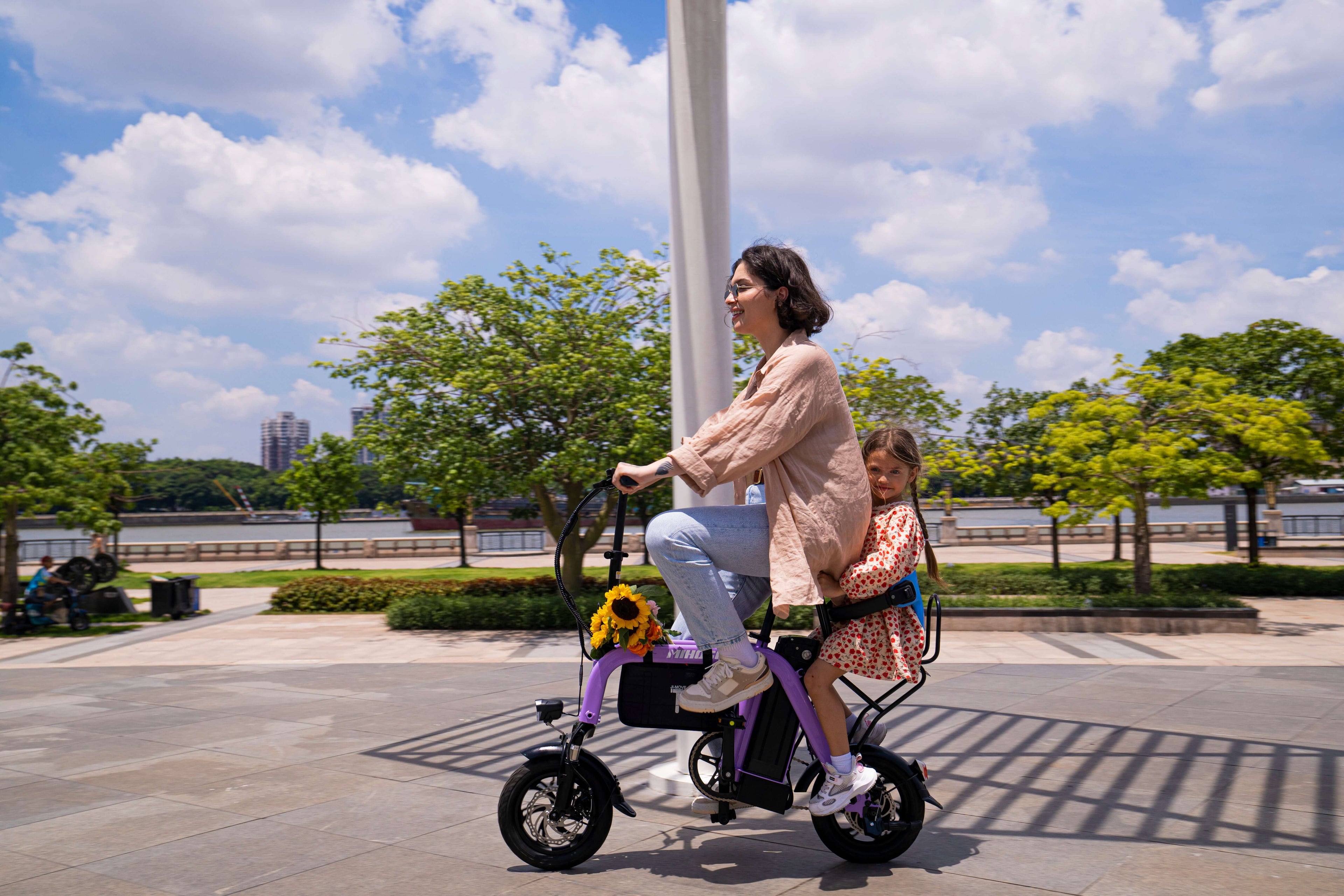Winter Storage Fundamentals for 2025
Modern lithium-ion batteries and advanced e-bike systems require specific care during extended storage periods. The ideal storage temperature is between 32º and 68º. Understanding these fundamentals is essential for preserving your investment and ensuring peak performance when riding season returns.
The Science Behind Proper Storage
E-bike components face unique challenges during winter storage. Electrical devices and components in e-bikes are sensitive to extreme temperatures. Store them in a cool, dry space, away from high humidity. Temperature fluctuations can cause condensation, leading to corrosion of electrical contacts and degradation of sensitive components.
Model-Specific Winter Storage Guidelines
Mihogo Air750 Max - Premium Carbon Fiber Care
Specifications: 750W Motor | 121 Mile Range | 25 MPH | Carbon Fiber Frame
The Air750 Max's advanced carbon fiber construction requires specialized winter care:
Storage Environment: Climate-controlled indoor space (40-70°F)
Battery Protocol: Remove battery; store at 50-60% charge
Frame Protection: Carbon fiber-safe protective cover
Maintenance Focus: Electronic system protection and carbon fiber frame preservation
Winter Terrain Suitability: Not recommended for winter riding due to premium components requiring protection from road salt and moisture.
Mihogo ONE Utility E-Bike - Heavy-Duty Winter Preparation
Specifications: 750W Motor | 167 Mile Range | 25 MPH | Utility Design
The ONE's utility design makes it more winter-resilient, but proper storage is still essential:
Storage Environment: Garage or shed with moisture protection
Battery Protocol: High-capacity battery requires monthly charge monitoring
Frame Protection: Corrosion-resistant coating inspection and renewal
Maintenance Focus: Cargo system maintenance and utility component lubrication
Winter Terrain Suitability: Suitable for winter riding with proper tire upgrades and protective gear. Heavy-duty frame handles road salt exposure better than other models.
Mihogo RX 2.4 - Folding E-Bike Storage Solutions
Specifications: 500W Motor | 40 Mile Range | 23 MPH | Folding Design
The RX 2.4's folding mechanism requires specific winter storage considerations:
Storage Environment: Indoor storage in folded position
Battery Protocol: Compact battery benefits from consistent temperature
Frame Protection: Hinge and joint lubrication essential
Maintenance Focus: Folding mechanism care and compact component protection
Winter Terrain Suitability: Excellent for winter storage due to space-saving design. Suitable for occasional winter rides with appropriate tires.
Mihogo Mini - Compact Care Requirements
Specifications: 350W Motor | 62 Mile Range | 21.9 MPH | Mini Design
The Mini's compact design simplifies winter storage while requiring specific attention:
Storage Environment: Easy indoor storage due to size
Battery Protocol: Smaller battery requires more frequent monitoring
Frame Protection: Complete coverage due to compact electrical spacing
Maintenance Focus: Compact component accessibility and protection
Winter Terrain Suitability: Limited winter use recommended. Best for protected storage and occasional fair-weather winter rides.
Essential Battery Storage Protocol for 2025
Charge Your Battery to 50-80% Before Putting it in Storage. Remove the Battery from Your Bike Before you Store It. Store Your Battery at a Cool Temperature Below 24 °C and above 5°C. Check Your Battery Every 2-3 Months to Make Sure it hasn't discharged below 20%.
The 40-60% Golden Zone
If you plan to store your bike for several weeks or months (e.g., over the winter), always maintain the battery's charge between 40% and 60%. This is the safest state for long-term health. This optimal charge level minimizes chemical stress on lithium-ion cells while preventing deep discharge.
Temperature Management
High temperature = BAD for Li-ion cells. Anything above 40 degrees Celsius or 105 degrees Fahrenheit should be considered high temperature. Proper temperature control is crucial for maintaining battery chemistry integrity during extended storage periods.
Monthly Monitoring Schedule
Create a simple calendar reminder system:
- Month 1: Check charge level, bring to 50% if needed
- Month 2: Inspect for any physical damage or swelling
- Month 3: Perform full diagnostic check before spring preparation
Pre-Storage Cleaning and Preparation
Deep Cleaning Protocol
Wipe Down the Frame: Use a damp cloth to clean the frame, then dry it thoroughly. Avoid using a high-pressure washer, as it can force water into sensitive components. Thorough cleaning prevents corrosion and damage during storage.
Step-by-Step Cleaning Process:
- Frame Cleaning: Mild soap solution with microfiber cloths
- Drivetrain Attention: Degrease chain, cassette, and derailleur
- Electrical Protection: Cover all ports and connections
- Final Inspection: Check for any damage requiring repair
Lubrication and Protection
Apply Bike-Specific Lubricant: Use a high-quality lubricant designed for bikes on the chain, derailleur, and pivot points. Avoid using WD-40, as it's not a true lubricant.
Critical Lubrication Points:
- Chain and drivetrain components
- Brake pivots and cables
- Folding mechanisms (RX 2.4 specific)
- Suspension points (where applicable)
Storage Environment Optimization
Ideal Storage Conditions
Between freezing and room temperature, or 32° to 68° Fahrenheit (5 and 20 degrees Celsius), is the optimal range for e-bike storage.
Environmental Checklist:
- Temperature: Consistent 40-70°F (5-20°C)
- Humidity: Below 50% to prevent condensation
- Ventilation: Adequate airflow without direct drafts
- Security: Protected from theft and accidental damage
Protective Covering Strategy
Use a Breathable Cover: Opt for a cover made from breathable material to prevent condensation buildup under the cover.
Cover Selection Criteria:
- Breathable fabric to prevent moisture trapping
- UV protection for components
- Secure fit to prevent dust accumulation
- Easy removal for periodic inspections
Advanced Winter Maintenance Techniques
Electrical System Protection
Cover Electrical Ports: If your e-bike has exposed ports or connections, cover them with protective caps to keep out dust and moisture.
Electrical Protection Protocol:
- Apply dielectric grease to all connections
- Cover display units and charging ports
- Inspect wiring harnesses for damage
- Document any electrical issues for spring service
Brake System Winter Care
Check Brake Components: Ensure brake pads and cables are clean and functioning correctly before storage.
Brake Maintenance Steps:
- Inspect brake pad wear levels
- Clean rotor surfaces
- Check cable tension and lubrication
- Test brake lever feel and response
Spring Reactivation Protocol
Post-Storage Inspection Checklist
Regular maintenance can extend the life of your e-bike by up to 30%, according to the National Bicycle Dealers Association.
Comprehensive Spring Awakening:
- Battery Rehabilitation: Gradual charging to full capacity
- System Diagnostics: Full electrical system check
- Mechanical Inspection: Complete component functionality review
- Test Ride Protocol: Graduated return to full performance
Professional Service Considerations
Many local bike shops offer seasonal maintenance packages that include comprehensive inspections of the motor, battery, brakes, and drivetrain. Consider professional spring tune-ups for optimal performance restoration.
Model-Specific Winter Riding Considerations
Mihogo ONE Utility - Winter Workhorse
The ONE Utility's robust design makes it the most suitable Mihogo model for winter riding:
- Heavy-duty frame handles road salt exposure
- Extended battery range accommodates cold-weather efficiency loss
- Utility mounting points allow winter accessory installation
All-Model Winter Riding Guidelines
When winter riding is necessary:
- Tire Upgrades: Install winter-specific or studded tires
- Battery Management: Expect 20-30% range reduction in cold weather
- Post-Ride Care: Immediate cleaning to remove salt and moisture
- Component Protection: Regular lubrication to prevent freeze-up
Cost-Effective Storage Solutions
DIY Storage Optimization
Creating the perfect storage environment doesn't require expensive equipment:
Budget-Friendly Solutions:
- Moisture Control: Silica gel packets in storage area
- Temperature Monitoring: Simple digital thermometer/hygrometer
- Air Circulation: Small fan for consistent air movement
- Organization: Wall-mounted storage systems
Long-Term Investment Protection
With proper care, you can typically get 800-1000 charge cycles out of your Magnum battery — roughly two to five years, depending on how frequently and how far you ride. Proper winter storage significantly extends component lifespan.
2025 Storage Technology Trends
Smart Monitoring Systems
Emerging technologies for winter storage include:
- Battery Management Apps: Real-time charge monitoring
- Environmental Sensors: Automated storage condition alerts
- Smart Covers: Integrated monitoring and protection systems
- Maintenance Reminders: Digital scheduling and tracking
Advanced Protection Materials
New storage solutions incorporate cutting-edge materials:
- Nano-coatings: Enhanced corrosion protection
- Smart Fabrics: Responsive moisture management
- Anti-Static Materials: Electronic component protection
External Resources for Advanced Care
For comprehensive winter storage research and best practices:
- Battery University Guide - Scientific storage principles and lithium-ion best practices
- International Electrotechnical Commission Standards - Global electrical safety and storage standards








